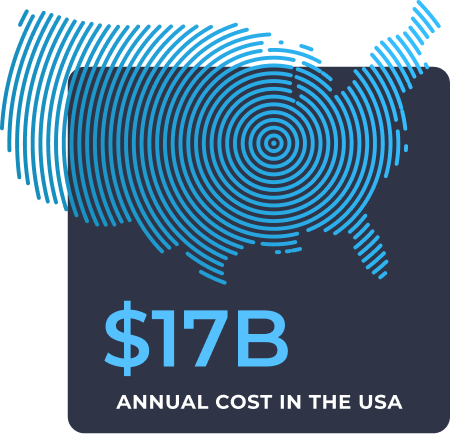Diabetic foot ulcers are a disease within a disease. Many afflicted with diabetes will eventually develop a condition referred to as peripheral neuropathy, leaving them unable to feel pain or other sensation in their feet. Because of this, these individuals are unaware of recurring pressure or friction to their feet caused by daily habits that could be eroding the integrity of their skin. In addition to damage over time, these individuals are also unaware of immediate trauma causing wounds. The issue is compounded by the fact that many with diabetes lose adequate perfusion to their extremities, leaving their skin more vulnerable to injury.




The lifetime risk of developing a diabetic foot ulcer is between 19% and 34%. While the rate of diabetic foot ulcers for those with diabetes is approximately 4%, the rate increases to 7.5% following diagnosis of peripheral neuropathy. The cost of diabetic foot ulcers to the US healthcare system is estimated near $31K per episode, with a total annual estimated cost of more than $17B, driven by ED visits, hospitalizations, and amputations. While these costs are important, the real cost is experienced by the individual. Diabetic foot ulcer episodes may persist for months, impacting a person’s ability to drive, work or care for their family.
1. Peripheral Neuropathy | National Institute of Neurological Disorders and Stroke (nih.gov)
2. The current burden of diabetic foot disease – PMC (nih.gov) 3. Armstrong (2007) Skin Temperature Monitoring Reduces the Risk for DFU in High-Risk Patients 4. Lavery (2007) Preventing DFU Recurrence in High-Risk Patients: Use of Temperature Monitoring 5. Lavery (2004) Home Monitoring of Foot Skin Temperatures to Prevent Ulceration


Learn more: